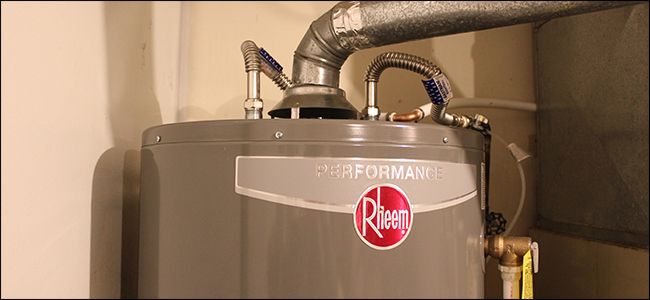Useful Techniques for Maintaining Your Home's Hot Water System
Useful Techniques for Maintaining Your Home's Hot Water System
Blog Article
Do you find yourself trying to find insight about Tips For Maintaining Your Hot Water Heater?

Hot water is vital for day-to-day convenience, whether it's for a revitalizing shower or washing meals. To ensure your warm water system runs successfully and lasts much longer, regular upkeep is crucial. This article offers functional tips and insights on exactly how to preserve your home's warm water system to avoid interruptions and pricey fixings.
Introduction
Preserving your home's warm water system might seem complicated, yet with a couple of easy steps, you can ensure it operates smoothly for many years to find. This guide covers whatever from comprehending your hot water system to DIY maintenance pointers and knowing when to hire expert assistance.
Value of Preserving Your Warm Water System
Normal upkeep not only extends the life expectancy of your warm water system however additionally guarantees it operates efficiently. Overlooking maintenance can cause lowered performance, greater power bills, and even premature failure of the system.
Signs Your Hot Water System Needs Maintenance
Knowing when your hot water system needs attention can avoid major issues. Watch out for indications such as inconsistent water temperature, strange noises from the heater, or rusty water.
Understanding Your Hot Water System
Before diving right into upkeep jobs, it's handy to recognize the standard parts of your warm water system. Commonly, this consists of the water heater itself, pipes, anode rods, and temperature controls.
Monthly Maintenance Tasks
Regular month-to-month checks can aid capture small problems before they intensify.
Flushing the Water Heater
Flushing your hot water heater gets rid of debris accumulation, enhancing efficiency and lengthening its life.
Monitoring and Changing Anode Rods
Anode rods avoid corrosion inside the container. Evaluating and replacing them when worn out is crucial.
Evaluating and Readjusting Temperature Level Settings
Adjusting the temperature level setups makes sure optimal performance and safety and security.
Do It Yourself Tips for Maintenance
You can perform numerous upkeep tasks on your own to maintain your hot water system in top problem.
Checking for Leaks
Regularly check pipes and links for leakages, as these can result in water damages and greater expenses.
Testing Pressure Relief Valves
Examining the stress safety valve ensures it functions correctly and prevents too much stress accumulation.
Protecting Pipes
Shielding warm water pipes lowers heat loss and can save power.
When to Call an Expert
While DIY maintenance is valuable, some concerns need expert know-how.
Facility Problems Requiring Specialist Help
Instances include significant leakages, electrical troubles, or if your water heater is continually underperforming.
Routine Expert Maintenance Conveniences
Professional upkeep can consist of comprehensive examinations, tune-ups, and guaranteeing compliance with safety and security standards.
Conclusion
Regular upkeep of your home's warm water system is important for performance, durability, and cost financial savings. By following these suggestions and recognizing when to seek professional assistance, you can ensure a trusted supply of hot water without unexpected interruptions.
How to Maintain an Instant Hot Water Heater
Before tinkering with your hot water heater, make sure that it’s not powered on. You also have to turn off the main circuit breaker and shut off the main gas line to prevent accidents. Also turn off the water valves connected to your unit to prevent water from flowing into and out of the appliance. 2. When you’re done, you have to detach the purge valves’ caps. These look like the letter “T†and are situated on either side of the water valves. Doing so will release any pressure that has accumulated inside the valves while at the same time avoid hot water from shooting out and burning your skin. 3. When the purge valves’ caps are removed, you have to connect your hosing lines to the valves. Your unit should have come with three hoses but if it didn’t, you can purchase these things from any hardware or home repair shops. You can also get them from retail stores that sell water heating systems. Read the user’s manual and follow it to complete this task properly. When the hosing lines are connected, open the purge port’s valves. 4. You should never use harsh chemical cleaners or solutions when cleaning your unit. Make use of white vinegar instead. It should be undiluted and you’ll probably use about 2 gallons. 5. Now flush your water heater. This task should probably take about 40 minutes. We can’t give you specific directions for this because the procedure is carried out depending on the type, model and brand of your heater. With that being said, refer to the user’s manual. 6. When you’re done draining the unit, you have to turn off the purge port valves again. Remove the hosing lines that you earlier installed on each of the water valves. Put the valve caps (purge port) back in their respective places and be very careful so as not to damage the rubber discs that are found inside these caps. 7. Now that everything’s back in place, check your user’s manual again to find out how to reactivate your water heating system. 8. Once it is working, turn one of your hot water faucets on just to let air pass through the heater’s water supply pipes. Leave the tap on until water flows smoothly out of it. https://www.orrplumbing.com/blog/2014/september/how-to-maintain-an-instant-hot-water-heater/

As an avid reader about How to Maintain Your Water Heater & Prolong its Life, I imagined sharing that piece was a smart idea. Sharing is caring. Helping people is fun. I recognize the value of your readership.
Book-Now Report this page